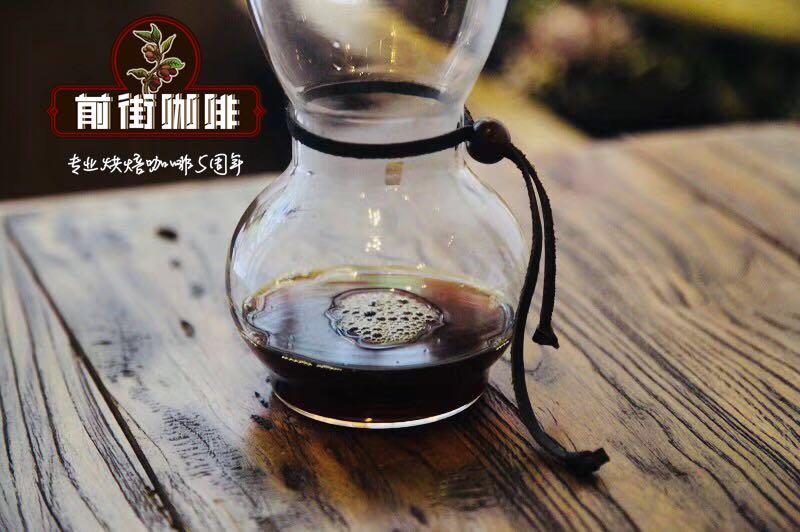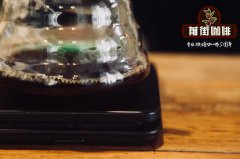Ecuadorian Coffee and Darwinian Evolutionism have to mention the story is Ecuadorian coffee good?

Professional coffee knowledge exchange more coffee bean information please follow the coffee workshop (Wechat official account cafe_style)
The Galapagos Islands may be a strange name to most people, but if you mention Darwin and the theory of evolution, or the phrase "natural selection, survival of the fittest", you may suddenly realize how important this place is in the history of mankind, because since Darwin put forward the theory of evolution in the mid-19th century, human view of life has changed dramatically. Today in the 21 century, we can even say that modern life science is based entirely on Darwin's theory of evolution, all of which began after he visited the Galapagos Islands in 1835.
Ecuador Galapagos, Galapagos, Ecuador
Located in the Galapagos Islands of Ecuador, South America, Galapagos means tortoise in Spanish, so it is also known as Turtle Island. This coffee bean is old bourbon coffee, 100% organic, shaded under tall trees, located in volcanic mountains, where coffee trees receive a perfect balance of sun and rain, and at the right height, provide excellent taste and aroma.
Each coffee is carefully hand-picked, picking only the freshest and ripe cherries in our eco-processing plant, using the island's unique spring water. Put the cherries into the ecological peeling machine, in which we only choose the best cherries for treatment and decomposition, and reintroduce the planting area as natural fertilizer.
Galapagos
Maybe you know that the world's top chocolate is Belgian chocolate, but did you know that Belgium's top chocolate raw material comes from Ecuador.
You may know that the most expensive coffee in the world is Kopi Luwak, but did you know that coffee beans grown without any chemicals in Ecuador's Galapagos Islands are rare plants as precious as jewelry.
Ecuador, a member of the Union of South American Nations, is located in northwest South America, bordering Colombia in the north, Peru in the south and the Pacific Ocean on the west. Quito, the capital, is located in the foothills of Mount Picancha.
Ecuador is the highest Arabian coffee plantation in the world. Since the coffee tree was first introduced into Ecuador in 1875, the quality of its coffee has remained unchanged for 100 years, especially the coffee harvested in early June every year, which is called "the best coffee in the world". Ecuadorian coffee beans are divided into Galapagos and Segante, both of which have large particles and heavy weight. In particular, the unique geographical conditions of the Galapagos Islands give coffee beans excellent genes that are superior to those of other producing areas, and its high quality comes from the absence of any chemical agents when growing. As Ecuador's land suitable for Arabian coffee trees is gradually decreasing, Galapagos coffee is even more precious.
Because of the unique role of the Galapagos Islands in the course of history, the Government of Ecuador has designated the Galapagos Islands as a national park, the land is no longer allowed to be reclaimed as new agricultural land, and the introduction and use of chemical fertilizers, pesticides, herbicides and other chemicals are strictly prohibited, so coffee produced in the Galapagos Islands is recognized as a natural product.
Coffee was introduced in Ecuador in the early 19th century and remained one of Ecuador's main export crops until the 1970s. Today, oil, shrimp and bananas are the most exported. )
Coffee export from Ecuador
Ninety percent of Ecuador's coffee exports are in Guayaquil, which was built on October 9, 1536. It is the industrial center of Ecuador, the main foreign trade port and the hub of railways, roads and aviation.
Challenges facing Ecuador
Selective harvesting in Ecuador is particularly difficult: coffee needs to be harvested throughout the year because the country is located at the equator.
The country's altitude ranges from sea level to more than 2000 metres-wide differences in topography and climate, coupled with specific challenges combined with its position on the equator, provide a unique but not impossible challenge. A branch usually includes all stages of the coffee cycle: unripe coffee cherries, ripe coffee cherries, and side-by-side coffee blossoms. This forces a farmer to constantly pick coffee and process it to get enough exports, resulting in higher labor costs due to extended picking cycles.
Another major challenge: climate change
Ecuador is prone to such subtle changes, and minor climate changes can have a huge impact on farmland, whether due to elevation and the equator, or to the jungles in the east and the oceans in the west. Where fog is often seen in the morning and afternoon sun, it is sometimes shrouded in fog all day and cannot be dry even in a drying factory. In some cases, the temperature and exposure can become too high for coffee farms. In order to grow coffee of the same quality as in previous years, coffee farmers must pay more time.
Ecuadorians do not believe that good coffee must grow at high altitude. they grow coffee not only along the ridge bones of the Andes, but also in coastal areas, low-lying Amazon basins and even the Galapagos Islands. As roasters across the United States are looking for sustainable, small coffee plantations, they are increasingly turning to Ecuador, where it is not uncommon for names like Loja, Zaruma and Intag to appear in bean bags.
Ecuador has great potential, the coffee produced is exotic, and its quality is worth recommending. However, the biggest problem at present is the output. Ecuador exports only 100 containers (1 container = 40,000 pounds) of washed Arabica coffee each year. A coffee maker imports more than 100 containers of coffee a year, while the rest of Ecuador coffee is poor quality sun beans and robusta coffee. Supply to the huge instant coffee market at home and abroad.
Important Notice :
前街咖啡 FrontStreet Coffee has moved to new addredd:
FrontStreet Coffee Address: 315,Donghua East Road,GuangZhou
Tel:020 38364473
- Prev

Ecuador coffee rumba producing area Zumba information introduction Ecuador coffee expensive how to buy
Professional coffee knowledge exchange more coffee bean information please follow the coffee workshop (Wechat official account cafe_style) Ecuador Lomba Aklin Farmers Association Ecuador Zumba ACRIM national (Ecuador) producing area Zumba, Zamora-Chinchipe 1300-1900 meters above sea level planted varieties Tibica (Typica), Kaddura (Caturra) and bourbon (B)
- Next

Nicaraguan Coffee Fairview Manor Information Fairview Manor Maraka Dula Coffee Variety Flavor performance
Professional coffee knowledge exchange more coffee bean information please follow Coffee Workshop (Wechat official account cafe_style) Fairview Manor is located on the outskirts of San Fernando, Nicaragua, carefully managed by the founder Roger Esau Herrera Ortez. The manor is located in the mountain area of 1400-1650 meters above sea level. the low temperature leads to the slow growth of coffee trees.
Related
- Detailed explanation of Jadeite planting Land in Panamanian Jadeite Manor introduction to the grading system of Jadeite competitive bidding, Red bid, Green bid and Rose Summer
- Story of Coffee planting in Brenka region of Costa Rica Stonehenge Manor anaerobic heavy honey treatment of flavor mouth
- What's on the barrel of Blue Mountain Coffee beans?
- Can American coffee also pull flowers? How to use hot American style to pull out a good-looking pattern?
- Can you make a cold extract with coffee beans? What is the right proportion for cold-extracted coffee formula?
- Indonesian PWN Gold Mandrine Coffee Origin Features Flavor How to Chong? Mandolin coffee is American.
- A brief introduction to the flavor characteristics of Brazilian yellow bourbon coffee beans
- What is the effect of different water quality on the flavor of cold-extracted coffee? What kind of water is best for brewing coffee?
- Why do you think of Rose Summer whenever you mention Panamanian coffee?
- Introduction to the characteristics of authentic blue mountain coffee bean producing areas? What is the CIB Coffee Authority in Jamaica?

